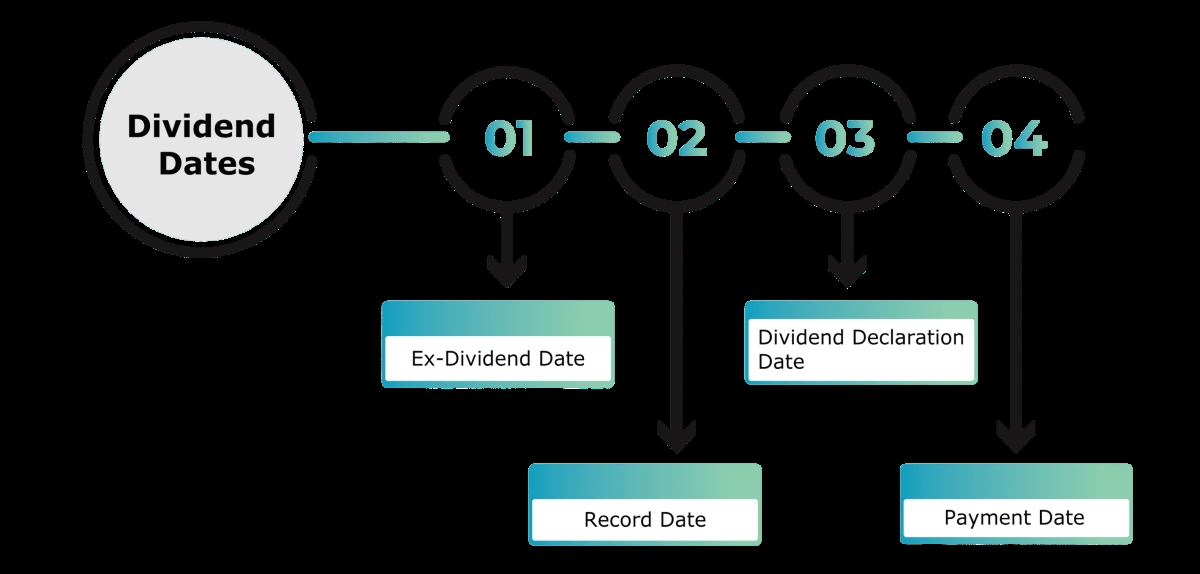

Finance
How APR Works On Car Loans?
Published: February 18, 2024
Learn how APR affects car loans and gain a better understanding of finance options. Get insights into managing car loan interest rates.
(Many of the links in this article redirect to a specific reviewed product. Your purchase of these products through affiliate links helps to generate commission for LiveWell, at no extra cost. Learn more)
Table of Contents
Introduction
When it comes to financing a car, understanding the intricacies of the annual percentage rate (APR) is crucial. The APR plays a pivotal role in determining the total cost of a car loan and can significantly impact your financial commitments. This comprehensive guide aims to demystify the concept of APR on car loans, shedding light on its significance, calculation, and influencing factors.
Navigating the world of car financing can be daunting, especially when confronted with unfamiliar terminologies and complex numerical figures. However, gaining a firm grasp of how APR works on car loans is empowering and can potentially save you a substantial amount of money over the course of your loan.
In the subsequent sections, we will delve into the mechanics of APR, explore the factors that influence APR on car loans, and elucidate the methods for calculating APR. Additionally, we will underscore the importance of APR in the context of car loans, equipping you with the knowledge needed to make informed and advantageous financial decisions.
Understanding APR is akin to wielding a powerful financial tool, enabling you to discern the true cost of borrowing and make comparisons across different loan offers. As we embark on this enlightening journey through the realm of APR on car loans, prepare to unravel the complexities and emerge with a heightened understanding of this fundamental aspect of car financing.
Understanding APR
Annual Percentage Rate (APR) serves as a comprehensive metric for assessing the cost of borrowing on a yearly basis. It encompasses not only the interest rate but also other fees and charges associated with the loan, providing a more holistic representation of the financial commitment. When applied to car loans, the APR reflects the total annual cost of the loan, inclusive of interest and any additional costs imposed by the lender.
It’s important to distinguish between the interest rate and APR. While the interest rate solely pertains to the cost of borrowing the principal amount, the APR encapsulates the interest rate along with any other charges, such as origination fees, discount points, and certain closing costs. Therefore, the APR offers a more accurate portrayal of the true cost of a car loan, enabling borrowers to make informed comparisons between different loan options.
For instance, two car loans may have the same interest rate but differ in terms of additional fees and charges. In this scenario, the APR would reveal the disparities in the overall cost of the loans, empowering borrowers to discern the more economical option. Understanding the APR on car loans is pivotal in making sound financial decisions and avoiding potential pitfalls associated with obscured costs.
Moreover, the APR facilitates transparency in lending practices, as it compels lenders to disclose the complete cost of borrowing, thereby empowering consumers to make well-informed choices. By comprehending the nuances of APR, borrowers can gain insight into the long-term financial implications of their car loans and ascertain the most favorable terms based on their individual circumstances.
As we unravel the intricacies of APR on car loans, it becomes evident that this metric serves as a vital tool for borrowers, providing clarity and enabling astute decision-making in the realm of car financing.
Factors Affecting APR on Car Loans
Several key factors influence the annual percentage rate (APR) on car loans, exerting a substantial impact on the overall cost of borrowing. Understanding these determinants is pivotal in navigating the realm of car financing and securing favorable loan terms.
- Credit Score: A borrower’s credit score plays a pivotal role in determining the APR on a car loan. Typically, individuals with higher credit scores are offered lower APRs, reflecting their perceived creditworthiness and reduced risk for lenders. Conversely, lower credit scores may result in higher APRs, as lenders seek to mitigate the heightened risk associated with these borrowers.
- Loan Term: The duration of the loan, commonly referred to as the loan term, can impact the APR. Shorter loan terms often entail lower APRs, as they present less risk for lenders. In contrast, longer loan terms may carry higher APRs, reflecting an extended period of potential financial exposure for the lender.
- Down Payment: The size of the down payment can influence the APR on a car loan. A larger down payment may lead to a lower APR, as it signifies a lower loan-to-value ratio and reduced risk for the lender. Conversely, a smaller down payment may result in a higher APR, as it represents a greater financial exposure for the lender.
- Market Conditions: Fluctuations in economic conditions and interest rate environments can impact the prevailing APRs on car loans. During periods of economic stability and lower interest rates, borrowers may benefit from more favorable APRs. Conversely, economic volatility and higher interest rates may lead to elevated APRs on car loans.
- Vehicle Age and Mileage: The age and mileage of the vehicle being financed can influence the APR. Newer vehicles and those with lower mileage may qualify for lower APRs, reflecting their perceived reliability and diminished risk for the lender. Conversely, older vehicles or those with higher mileage may incur higher APRs, aligning with the heightened risk associated with these assets.
By comprehending the multifaceted factors that shape the APR on car loans, borrowers can strategically position themselves to secure advantageous loan terms and minimize the long-term cost of borrowing.
Calculating APR on Car Loans
Calculating the annual percentage rate (APR) on car loans involves a nuanced process that considers various components of the loan, ultimately yielding a comprehensive representation of the borrowing cost. The following steps elucidate the methodology for computing the APR on car loans:
- Identify Loan Components: Begin by identifying the key components of the car loan, including the principal amount, interest rate, and any additional fees or charges imposed by the lender.
- Determine Total Payments: Calculate the total amount to be repaid over the life of the loan, encompassing both the principal and the total interest accrued.
- Account for Loan Term: Consider the duration of the loan, as this influences the total interest paid. Shorter loan terms typically result in lower overall interest payments, impacting the APR.
- Factor in Additional Costs: Take into account any ancillary expenses, such as origination fees, closing costs, or discount points, as these contribute to the total cost of borrowing and consequently affect the APR.
- Compute Effective APR: Utilize the aforementioned data to compute the effective APR using established formulas or online APR calculators. This process integrates all relevant loan components to derive the comprehensive APR figure.
By diligently following these steps and accounting for the various facets of the car loan, borrowers can arrive at a precise understanding of the APR, enabling informed decision-making and facilitating comparisons across different loan offers.
It is essential to recognize that the APR encapsulates the complete cost of borrowing, transcending the nominal interest rate and encompassing all pertinent fees and charges. As such, calculating the APR on car loans empowers borrowers to discern the true financial implications of their borrowing endeavors and make astute choices aligned with their long-term financial well-being.
Importance of APR on Car Loans
The annual percentage rate (APR) holds immense significance in the realm of car loans, exerting a profound impact on the overall cost of borrowing and the financial well-being of borrowers. Understanding the importance of APR is instrumental in making informed decisions and optimizing the terms of car financing.
Transparent Cost Evaluation: The APR provides a transparent and comprehensive evaluation of the total cost of borrowing, encompassing not only the interest rate but also additional fees and charges. This transparency empowers borrowers to make well-informed assessments of the financial implications of different loan offers, enabling them to select the most advantageous option.
Facilitates Comparison: By standardizing the representation of borrowing costs, the APR facilitates direct comparisons between various car loan offers. This empowers borrowers to gauge the relative affordability of different loans, considering both the interest rate and associated fees, and select the most cost-effective option tailored to their financial circumstances.
Informed Decision-Making: Understanding the APR equips borrowers with the knowledge needed to make astute financial decisions. By comprehending the true cost of borrowing, borrowers can evaluate the long-term affordability of car loans, assess their financial commitments, and avoid potential financial strain resulting from obscured or undisclosed costs.
Long-Term Financial Impact: The APR directly influences the total amount repaid over the life of the loan, thereby shaping the long-term financial impact of car financing. Even marginal differences in APR can translate to substantial disparities in total repayment amounts, underscoring the pivotal role of APR in determining the overall affordability of car loans.
Lender Accountability: The disclosure of APR fosters accountability among lenders, compelling them to provide transparent and complete information regarding the total cost of borrowing. This transparency serves to protect borrowers from predatory lending practices and ensures that they are equipped with the necessary information to make prudent financial decisions.
By recognizing the importance of APR on car loans, borrowers can navigate the landscape of car financing with confidence, leveraging their understanding of APR to secure favorable loan terms and mitigate the long-term financial burden associated with borrowing for a vehicle.
Conclusion
As we conclude our exploration of the annual percentage rate (APR) on car loans, it becomes evident that APR is a pivotal determinant of the overall cost of borrowing and a fundamental tool for informed decision-making in the realm of car financing. By encapsulating not only the interest rate but also additional fees and charges, the APR offers a comprehensive representation of the borrowing cost, empowering borrowers to make astute comparisons and select the most advantageous loan terms.
Understanding the nuances of APR on car loans is essential for navigating the intricacies of car financing, enabling borrowers to evaluate the long-term financial implications of their borrowing endeavors and make well-informed decisions aligned with their individual circumstances. The transparency and standardization facilitated by the APR foster accountability among lenders, ensuring that borrowers are equipped with complete and transparent information to guide their financial choices.
By comprehending the factors that influence APR, the methodology for calculating APR, and the significance of APR in the context of car loans, borrowers are empowered to approach car financing with clarity and confidence, ultimately minimizing the long-term cost of borrowing and optimizing their financial well-being.
As you embark on your car financing journey, armed with a heightened understanding of APR, may you navigate the landscape of loan offers with acumen, select the most advantageous terms, and embark on the road ahead with financial prudence and confidence.














